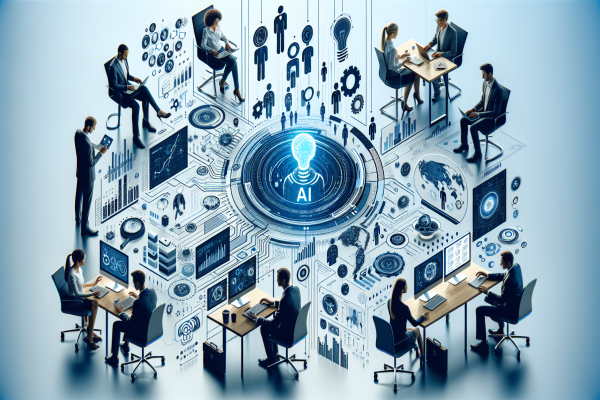
AI in Business Automation: A Game-Changer for SMEs
AI in Business Automation: A Game-Changer for SMEs
Artificial Intelligence (AI) has emerged as a pivotal force in business automation, transforming how small to medium enterprises (SMEs) operate. For business owners, entrepreneurs, and operations managers, understanding AI's potential is crucial for staying competitive in today's fast-paced market. This blog aims to educate readers on how AI can revolutionize business operations and drive growth.
Understanding AI's Impact on Business Automation
Defining AI and Its Transformative Capabilities
AI, or Artificial Intelligence, refers to the simulation of human intelligence in machines programmed to think and learn like humans. In business automation, AI's transformative capabilities include learning from data, making decisions, and adapting to new inputs. Unlike traditional automation, which follows set rules, AI can analyze patterns and improve over time.
AI vs. Traditional Methods
Traditional automation relies on predefined scripts and rules, while AI brings intelligence and adaptability to the table. For example, AI can automate customer service by providing 24/7 support, reducing response times, and improving customer satisfaction.
The Strategic Importance of AI for SMEs
Strategic Benefits of AI
For SMEs, AI offers strategic benefits such as enhanced decision-making, personalized customer experiences, and operational efficiency. AI tools can analyze vast amounts of data to provide insights that inform better business decisions.
Real-World Example
Consider a small bakery that used AI to optimize its inventory, reducing waste by 20%. This strategic use of AI not only saved costs but also improved the bakery's operational efficiency.
Essential AI Technologies Transforming Business Operations
Machine Learning
Machine learning is a subset of AI that enables systems to learn and improve from experience. It plays a crucial role in predictive analytics, helping businesses forecast trends and enhance customer insights.
Natural Language Processing (NLP)
NLP allows machines to understand and respond to human language, making it invaluable for automating customer interactions. Chatbots powered by NLP can handle customer queries efficiently, providing quick and accurate responses.
Computer Vision
Computer vision technology enables machines to interpret and make decisions based on visual data. This is particularly useful in quality control and inventory management, ensuring products meet standards and stock levels are optimized.
Real-World Application
Amazon uses AI for personalized recommendations, showcasing how machine learning and NLP can enhance customer experiences and drive sales.
Real-World Success Stories: AI in Action
Case Study 1: Logistics
A small logistics company improved delivery accuracy by 35% using AI for route optimization. This not only enhanced customer satisfaction but also reduced operational costs.
Case Study 2: Retail
A medium-sized online retailer increased sales by 25% through AI-driven personalization, tailoring product recommendations to individual customer preferences.
Overcoming AI Adoption Challenges
Common Challenges
Adopting AI comes with challenges such as data integration, cost constraints, and skill shortages. However, these hurdles can be overcome with strategic planning and training.
Actionable Strategies
Businesses can start by investing in training programs to upskill their workforce and exploring affordable AI solutions tailored to their needs.
Statistics
According to a Forrester study, 72% of SMEs report increased efficiency post-AI adoption, highlighting the potential benefits of overcoming these challenges.
Implementing AI: A Step-by-Step Guide
Step 1: Identify AI Opportunities
Conduct a comprehensive analysis to pinpoint areas where AI can add value, such as customer service, inventory management, or marketing.
Step 2: Develop an AI Strategy
Create a tailored AI strategy aligned with your business objectives, focusing on areas that will deliver the most significant impact.
Step 3: Select the Right Tools
Choose AI tools and partners that suit your business needs, ensuring they are scalable and cost-effective.
Step 4: Monitor and Refine
Continuously monitor AI processes and refine them to ensure optimal performance and return on investment.
Example
A small restaurant chain can implement AI to optimize supply chain management, ensuring ingredients are always fresh and available, reducing waste and improving customer satisfaction.
The Future of AI in Business Automation
Emerging Trends
AI-driven customer experiences and autonomous systems are among the emerging trends poised to impact SMEs. Innovations like AI-powered predictive analytics and edge computing are set to revolutionize business operations.
Conclusion
AI is a game-changer for small and medium businesses, offering tools to enhance efficiency, customer satisfaction, and growth. By embracing AI solutions, SMEs can stay competitive and thrive in the modern market.
Explore customized AI solutions at RashFlash. Stay informed about AI advancements by subscribing to our newsletter or scheduling a consultation.


